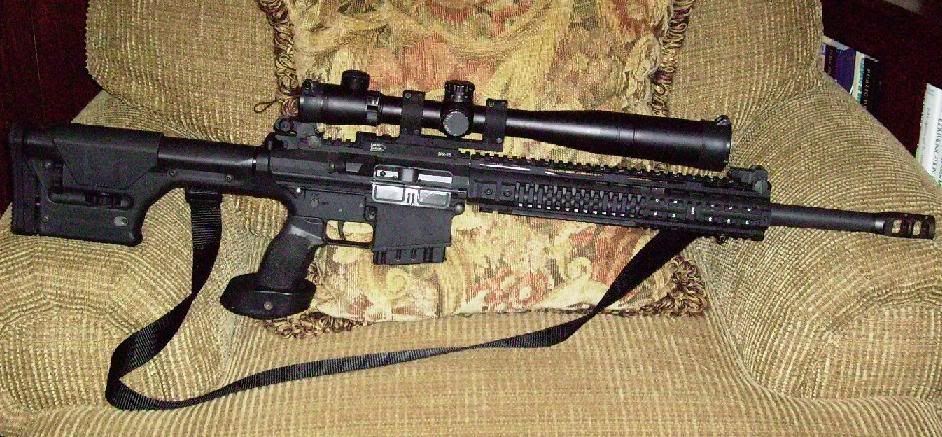I don't know if this will help, but I went down similar roads with my LR-308 and have some observations from the point of view of using the firearm as a practical firearm as well.
Mine was to be a precision rifle, but also a hunting rifle-- meaning that it needed to be of such length and weight that I could-- if not perfectly-- maneuver the rifle in a variety of conditions.
First, I started out with a 24" Fluted Stainless Steel barrel, rifle gas system. It had no brake or FH, and had a target crown.
It did not take me long to realize that I was not able to effectively fire it off-hand. On the way to one of my deer stands, the inability to hold the rifle steady enough to take a 100 yard shot costs me a trophy 10 point whitetail.
At the end of that season, I changed out the upper receiver for the LR-308B upper. It had a 18" bull barrel with no fluting and a target crown. It uses a carbine gas system.
Dropping from 24" to 18"-- even with losing the fluting allowed me to actually fire the rifle free-hand if I had to. It is still a heavy beast, but it is more practical now.
After the next deer season, I took the rifle in and had the barrel threaded for a JP Enterprises "Ben Cooley" Muzzle Brake.
Frankly, the rifle doesn't need a muzzle brake due to its weight. Recoil was manageable without one, and it is practically non-existent with the Cooley Brake.
Now, mine does have the added weight of a Magpul PRS stock, and a SWS E10 Freefloat forearm.
Pic is below. It is pictured with the 4" sunshade on the Leupold Mk IV that I use when I am in one particularly nasty deer stand that gets evening sun right in your face. Not pictured is a Harris bipod that I bring, but rarely put on the rifle. It has the limited capacity hunting magazine in it. I took the palmrest grip off and replaced it with a Magpul MIAD. The palmrest grip was comfortable, but bulky.
Overall, I am happy with the changes that I made.
Sorry for the bad picture.

 Win a FREE Membership!
Win a FREE Membership!